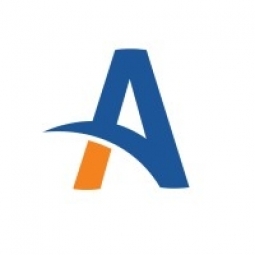Customer Company Size
Large Corporate
Region
- America
Country
- United States
Product
- Centerprise
- DW Builder
Tech Stack
- MS SQL
- MySQL
- Salesforce CRM
- Salesforce Marketing Cloud
Implementation Scale
- Enterprise-wide Deployment
Impact Metrics
- Productivity Improvements
- Cost Savings
Technology Category
- Platform as a Service (PaaS) - Data Management Platforms
- Application Infrastructure & Middleware - Database Management & Storage
Applicable Industries
- Education
Applicable Functions
- Business Operation
Services
- Data Science Services
- System Integration
About The Customer
The Michigan Education Association (MEA) is a self-governing education association that represents about 120,000 educators working throughout the state. The association utilizes data to organize bargaining units and continuing education, prepare invoicing, and for resolving member issues. MEA leverages data from several sources, including flat files and CSV files with over 8 million rows. To make integration easier, MEA uses Astera's Centerprise platform to extract data from these files and load it to an MS SQL-based transactional system. With Centerprise, the association is also able to minimize the manual effort involved in downloading and processing data, building a MySQL data warehouse, and populating it with data from its MS SQL transactional system. This data warehouse has enabled the organization to build an online membership application, allowing MEA to assist members more efficiently.
The Challenge
The Michigan Education Association (MEA) was facing a major challenge with its manual data extraction and integration process. The association received invoice data from a third-party vendor via an SFTP server. This data, contained in a zip folder, had to be downloaded, unzipped, and loaded into an MS SQL transactional system. The zip folder contained different types of files, including CSV and flat files, often with thousands or millions of records. Without an automation tool, the team at MEA had to download the individual files, set up flows, and execute the integration process manually. This was a time-consuming process. Additionally, MEA only wanted to insert records that had been changed or updated into the MS SQL transactional system, which was a challenge without a tool to facilitate the process.
The Solution
MEA opted for Astera's Centerprise platform due to its ease of use and robust automation capabilities. Centerprise allowed MEA to eliminate manual work and dramatically speed up its data integrations. Using the Centerprise platform, MEA scheduled the process of downloading folders containing invoicing data from the SFTP server overnight. This allowed the team to save on crucial productive time in the workday and spend it on reporting and analyses. Instead of waiting for an employee to manually execute the process as they arrive at work in the morning, MEA used Centerprise to complete the integration process overnight and have data available in a report-ready format before the start of the workday. With Centerprise, MEA was able to build a fully functional data warehouse to consolidate data and get a holistic view of its invoicing process. The team loaded data from the MS SQL transactional system to the MySQL data warehouse. From there, it was integrated with Salesforce CRM and Salesforce Marketing Cloud to turbocharge MEA's marketing efforts.
Operational Impact

Case Study missing?
Start adding your own!
Register with your work email and create a new case study profile for your business.
Related Case Studies.

Case Study
Revolutionizing Medical Training in India: GSL Smart Lab and the LAP Mentor
The GSL SMART Lab, a collective effort of the GSL College of Medicine and the GSL College of Nursing and Health Science, was facing a challenge in providing superior training to healthcare professionals. As clinical medicine was becoming more focused on patient safety and quality of care, the need for medical simulation to bridge the educational gap between the classroom and the clinical environment was becoming increasingly apparent. Dr. Sandeep Ganni, the director of the GSL SMART Lab, envisioned a world-class surgical and medical training center where physicians and healthcare professionals could learn skills through simulation training. He was looking for different simulators for different specialties to provide both basic and advanced simulation training. For laparoscopic surgery, he was interested in a high fidelity simulator that could provide basic surgical and suturing skills training for international accreditation as well as specific hands-on training in complex laparoscopic procedures for practicing physicians in India.

Case Study
IoT platform Enables Safety Solutions for U.S. School Districts
Designed to alert drivers when schoolchildren are present, especially in low-visibility conditions, school-zone flasher signals are typically updated manually at each school. The switching is based on the school calendar and manually changed when an unexpected early dismissal occurs, as in the case of a weather-event altering the normal schedule. The process to reprogram the flashers requires a significant effort by school district personnel to implement due to the large number of warning flashers installed across an entire school district.

Case Study
Implementing Robotic Surgery Training Simulator for Enhanced Surgical Proficiency
Fundacio Puigvert, a leading European medical center specializing in Urology, Nephrology, and Andrology, faced a significant challenge in training its surgical residents. The institution recognized the need for a more standardized and comprehensive training curriculum, particularly in the area of robotic surgery. The challenge was underscored by two independent studies showing that less than 5% of residents in Italian and German residency programs could perform major or complex procedures by the end of their residency. The institution sought to establish a virtual reality simulation lab that would include endourological, laparoscopic, and robotic platforms. However, they needed a simulator that could replicate both the hardware and software of the robotic Da Vinci console used in the operating room, without being connected to the actual physical console. They also required a system that could provide both basic and advanced simulation training, and a metrics system to assess the proficiency of the trainees before they performed surgical procedures in the operating theater.

Case Study
Edinburgh Napier University streamlines long-distance learning with Cisco WebEX
• Geographically dispersed campus made in-person meetings costly and inconvenient.• Distance-learning programs in Malaysia, India, and China required dependable, user-friendly online tools to maximize interaction in collaborative workspaces.• Virtual learning environment required a separate sign-in process, resulting in a significant administrative burden for IT staff and limited adoption of collaboration technology.

Case Study
8x increased productivity with VKS
Before VKS, a teacher would spend a lot of time showing a group of 22 students how to build a set of stairs within a semester of 120 hours. Along with not leaving the teacher much time to provide one-on-one support for each student to properly learn carpentry, it also left a considerable amount of room for error. Key information would be misinterpreted or lost as the class was taught in the typical show-and-tell way.

Case Study
Scalable IoT Empowering GreenFlex's Sustainable Growth
GreenFlex, a company that supports sustainable development, decarbonization, and energy efficiency, faced several challenges in its quest to expand its business. The company needed to deploy a robust and sustainable IoT technology to support its growth. It was crucial for them to monitor and control devices at customer sites in a safe and reliable manner. They also needed to integrate devices across a range of communication protocols and gather and act on data to meet efficiency targets. GreenFlex had previously built IoT capabilities into its digital platform, GreenFlexIQ, to monitor and manage customer sites remotely. However, they soon realized that they needed a new platform to support their ambitions. They needed a platform that could scale to connect more devices for production management and make it easier for the operations team to manage devices in the field.







